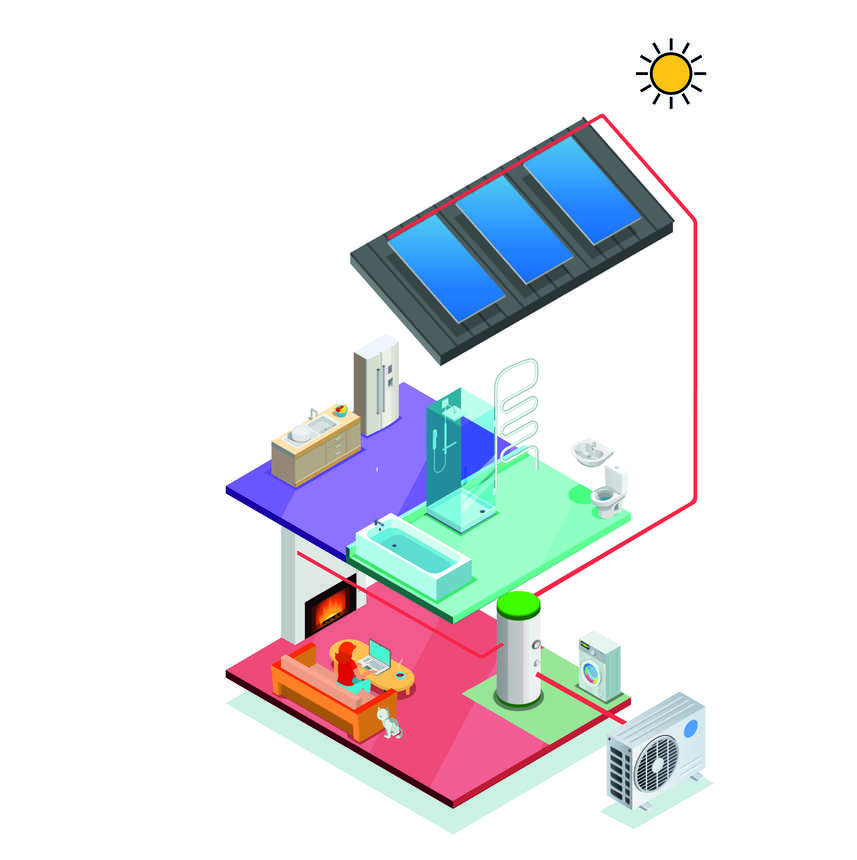Stove heat outputs explained
On our website we show, where possible the maximum heat output of the stoves (displayed as 'Heat Output'), with the nominal heat output shown separately (displayed as 'Nominal heat output'). The maximum heat output allows you to choose the correct size of stove for your room as well as letting you compare different makes of stove with each other. The output listed as the nominal heat output is the nominal output as stated by manufacturer. The lab tests confirm that this output is possible and the efficiency at which the stove runs at this output.
What is the heat output of a stove?
The heat output of wood burning and multifuel stoves is measured in kW. A kW is around 3400 BTU's. We have a kilowatt calculator which you can use to give you a guide to what the heat output of your stove should be - you simply enter in the dimensions of your room. You can then search for stoves by heat output.
How heat outputs of stoves are measured
In line with the BS and European EN standards the heat output (and efficiency) of stoves are now measured in the following way:
- The manufacturer gets to specify a refuelling period, with a minimum period of 45 mins and no upper limit.
- The manufacturer gets to specify the nominal heat output.
- The manufacturer can also specify the size of the fuel (within reason) - but apparently this rarely happens (I spoke to a technician at Gastec at CRE Ltd where they test a lot of stoves in the UK)
- The test then confirms that the stove can run at the given output.
- The efficiency is then calculated as the average efficiency over the period.
This means that the method is not necessarily impartial. If the manufacturers are keen to promote their stove as efficient they can simply change the refuelling period and the heat output to test at to get the results they want. If they would like their stove to appear to have a particular heat output then they can just specify it. This does not mean that all manufacturers are out there testing at wildly incorrect heat outputs, but there are commercial pressures at play which do mean that a shift of a few kW here or there may well be a favourable option.
So this means that:
- We can now no longer necessarily compare the heat output of different stoves as the stated nominal output is not necessarily the 'true' nominal output.
- The end user is left with no way of knowing how much heat the stove is going to give out when they actually use it.
- Because the nominal heat output that results from the test has no relation to the maximum heat output of the stove there is no way to size a stove to suit a particular room without reference to a maximum heat output figure.
- Similarly the efficiency ratings of various stoves cannot be compared with each other.
- The end user is left with no way of knowing how efficient the stove is going to be when they actually use it.
Some additional implications
UK Building Regulations recommend a permanently open supply of ventilation air for stoves of 550 sq mm/kW, for every kW above 5. But the heat output that this is based on is the nominal heat output. A stove will need the highest continuous supply of air for combustion when running at maximum output. The nominal heat output achieved in the EN test does not relate to the maximum heat output (because it is specified by manufacturer). In extreme cases, when burning coal, insufficient ventilation can be very dangerous indeed.
For further information on ventilation please see our stove room ventilation building regs page
For central heating stoves one often needs a heat leak radiator to be able to dump excess heat from the system in case the pump fails or the electricity is off. This radiator is commonly sized at 10% of the stove's heat output to water (depending on the manufacturer's recommendations). The heat leak radiator is a safety backup device and needs to work if the stove was running at maximum heat output. However if the radiator size is based on the nominal heat output to water of the boiler stove then one has no way of knowing if this will be sufficient when the stove is running at maximum output as the nominal heat output does not relate to the maximum heat output. One needs to base the heat leak size on the maximum heat output to water in order for it to make any sense.
Luckily many manufacturers can supply maximum and minimum heat outputs which they achieved from their own tests. We will be working towards gathering this information for as many stoves as possible.
For more information about the stove efficiency test see our stove efficiency page.



















































